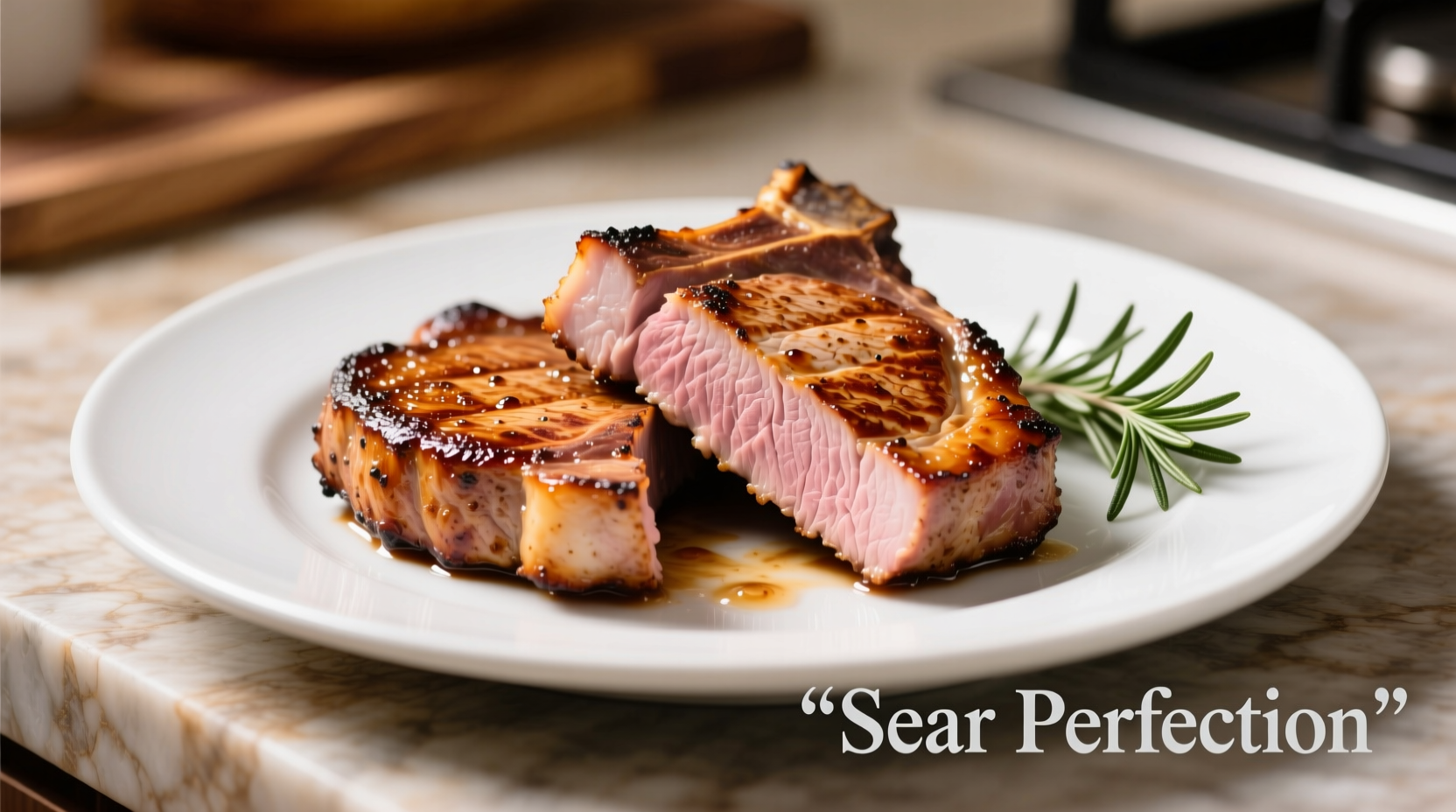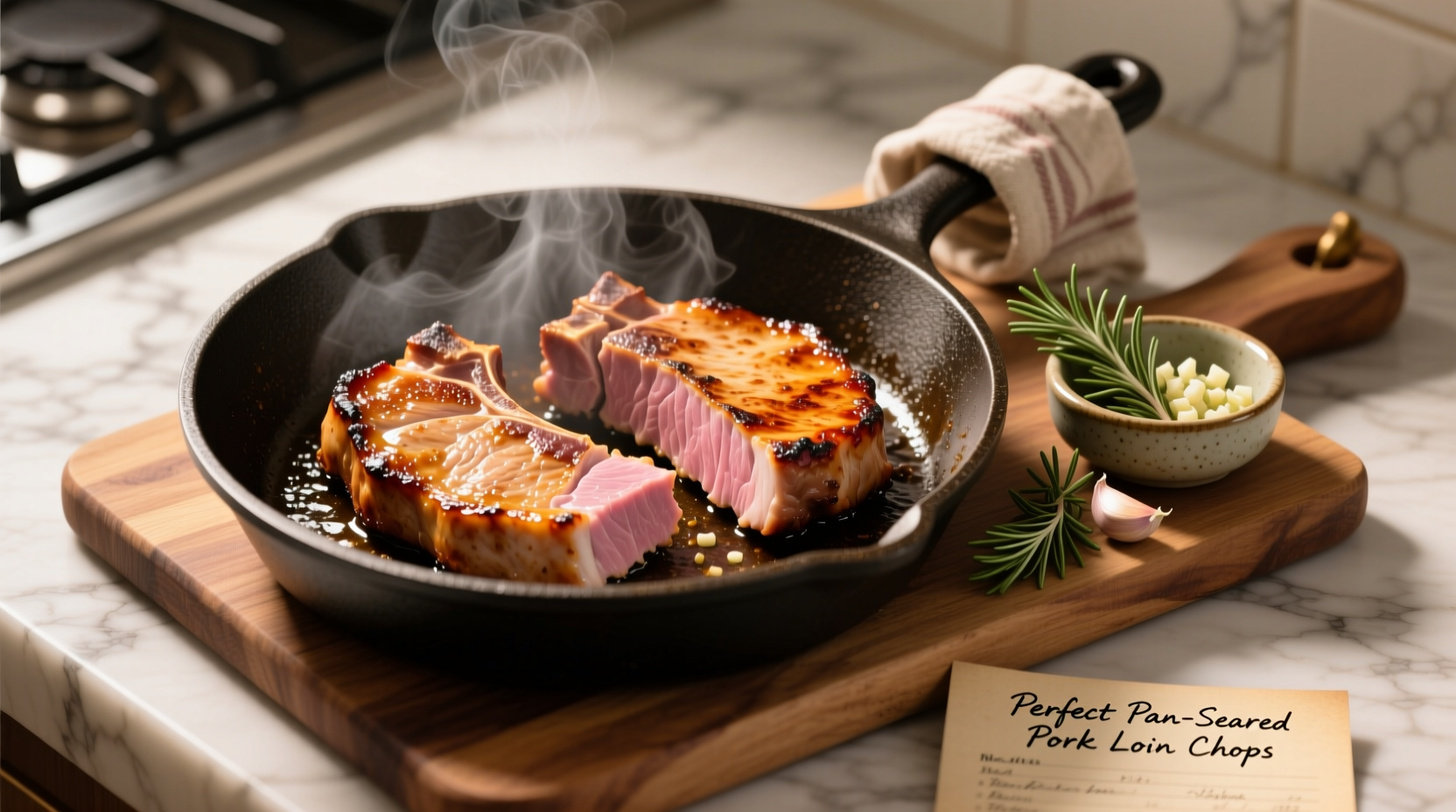Perfectly cooked boneless pork loin chops reach 145°F internal temperature with a golden crust, juicy interior, and no dryness. This guide delivers precise cooking times, temperature control methods, and professional searing techniques that guarantee restaurant-quality results every time.
Many home cooks struggle with boneless pork loin chops, ending up with dry, tough meat despite following basic recipes. The secret lies in understanding this lean cut's unique properties and applying precise temperature control. Unlike fattier pork cuts, loin chops require careful monitoring to avoid overcooking while still achieving proper food safety standards.
Why Boneless Pork Loin Chops Challenge Home Cooks
Boneless pork loin chops come from the muscle along the pig's spine, making them exceptionally lean with minimal marbling. This desirable cut contains only 3-5% fat content compared to 10-15% in pork shoulder. Without sufficient fat to retain moisture, these chops easily become dry when cooked beyond 145°F. The USDA's Food Safety and Inspection Service confirms that pork is safe to eat at 145°F with a three-minute rest period, debunking the outdated belief that pork must be cooked to 160°F.
| Cooking Method | Best For | Time to 145°F | Key Advantage |
|---|---|---|---|
| Cast Iron Searing | 1¼" thick chops | 6-8 minutes per side | Superior crust development |
| Oven Finishing | Thicker than 1½" | 10-12 minutes at 400°F | Even cooking throughout |
| Reverse Sear | Precision cooking | 20-25 minutes at 275°F | Perfect edge-to-edge doneness |
Essential Preparation Steps
Proper preparation makes the difference between tough and tender pork. Remove chops from refrigeration 30 minutes before cooking to eliminate temperature shock. Pat surfaces completely dry with paper towels - moisture prevents proper browning. Season generously with kosher salt (1½ tsp per pound) at least 15 minutes before cooking, allowing salt to penetrate the surface.
For optimal flavor development, consider a simple dry brine: combine 1 tablespoon kosher salt, 1 teaspoon black pepper, and 1½ teaspoons brown sugar per pound of pork. Rub evenly over all surfaces and refrigerate uncovered for 4-12 hours. This technique, recommended by the American Meat Science Association, enhances moisture retention through protein modification.

Mastering the Pan-Searing Technique
Cast iron delivers the most reliable results for boneless pork loin chops. Preheat your skillet over medium-high heat for 5 minutes until a drop of water sizzles violently. Add 1 tablespoon high-smoke point oil (avocado or grapeseed) and wait until shimmering but not smoking.
Place chops in the pan without crowding - leave 1 inch between pieces. Press gently with a spatula for 10 seconds to ensure full contact. Cook undisturbed for 3-4 minutes until a deep golden crust forms. Flip once using tongs and add 2 tablespoons butter, 2 smashed garlic cloves, and fresh thyme sprigs to the pan.
Tilt the pan and spoon the melted butter continuously over the chops for the final 2 minutes of cooking. This professional technique, called basting, adds flavor while gently cooking the top surface without direct heat exposure.
Avoiding Common Cooking Mistakes
Three critical errors ruin otherwise good pork chops:
- Overcrowding the pan: Causes steaming instead of searing - cook in batches if necessary
- Flipping too early: Premature flipping breaks the developing crust - wait until chops release naturally
- Cutting to check doneness: Releases precious juices - use an instant-read thermometer instead
The National Pork Board's research shows that chops lose up to 23% of their moisture when sliced immediately after cooking. Always allow a 5-7 minute rest period tented with foil before serving. During this time, the internal temperature will rise 5-10 degrees (carryover cooking) while juices redistribute.
Temperature Control: Your Secret Weapon
An instant-read thermometer isn't optional equipment - it's essential for perfect pork chops. Insert horizontally into the thickest part, avoiding the bone side. Remove chops from heat at 140°F to account for carryover cooking to the safe 145°F endpoint.
For visual confirmation, press the chop gently: medium-rare feels like the fleshy part of your palm below the thumb when making an OK sign. Medium doneness resembles the tension when touching thumb to middle finger. This tactile method, taught in culinary schools worldwide, provides immediate feedback when thermometers aren't available.
Serving and Flavor Pairings
Complement pork's mild flavor with acidic elements that cut through richness. A simple pan sauce made from the fond (browned bits), 1¼ cups chicken stock, and 2 tablespoons apple cider vinegar reduces to a glossy finish in 5 minutes. Finish with 1 tablespoon cold butter for richness.
Classic pairings include:
- Apple-based sauces with fresh sage
- Mustard cream sauces with shallots
- Roasted root vegetables with rosemary
- Creamy polenta or mashed potatoes
For special occasions, try a port wine reduction with dried cherries - the natural sugars complement pork's subtle sweetness without overpowering the delicate meat.
Troubleshooting Guide
Dry chops: Almost always caused by exceeding 145°F internal temperature. Invest in a reliable thermometer and remove chops at 140°F.
Pale exterior: Indicates insufficient pan heat or wet meat surface. Preheat skillet longer and ensure chops are thoroughly dried before seasoning.
Uneven cooking: Results from inconsistent thickness. Ask your butcher for uniformly thick chops or use a meat mallet to even out thicker sections.











 浙公网安备
33010002000092号
浙公网安备
33010002000092号 浙B2-20120091-4
浙B2-20120091-4